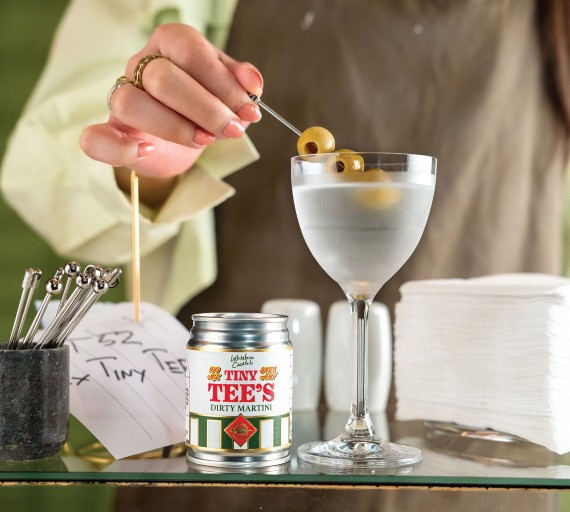Vodka has endured mixed fortunes in recent years. The pandemic and the war in Ukraine have both had long-term supply chain effects on sales, but more pressing is that, according to IWSR Drinks Market Analysis, in the US – one of vodka’s most important markets – tequila is expected to surpass vodka in value sales this year.
In fact, the US market for premium vodka wilted at a volume CAGR of -3.1% between 2015 and 2019 – and dropped a further 3.5% during 2020, according to IWSR. Furthermore, consumption is expected to decrease at a CAGR of -2.4% between 2021 and 2025.
Across the pond vodka isn’t performing much better and Sam Thackeray, managing director of Amber Beverage Group UK (previously known as Cellar Trends before being acquired in 2018), isn’t enthused by the market’s dynamism.
“Vodka is often marked down quite heavily in the UK so I think people get good value for money,” says Thackeray. “But from our point of view, it’s not as profitable as other segments and it stays relatively flat in terms of volume – there aren’t many fluctuations in sales. There also aren’t many opportunities to bring new drinkers in.”
Thackeray told Drinks International that while vodka remains the heartland of the company, distributing Stoli, Moskovskaya, Grasovka and Elit across the UK, the opportunities for major growth among the big players are limited.
“I think it’s difficult to convey value in the vodka market to consumers,” adds Thackeray. “I draw a comparison to prosecco because here in the UK people are prepared to pay a certain amount for a bottle of prosecco, regardless of where it sits on the quality scale – and the same can be said for vodka.”
This isn’t to say that there are no opportunities in the UK. Wales-based Au Vodka was named the UK’s fastest growing company earlier this year by the Growth Index 100 having recorded a yearly turnover of £43.9m despite only launching in 2015. The brand’s gold bottles stand out on back bars and it now has 11 flavours currently on the market.
“We knew that creating the gold bottle synonymous with Au Vodka and the vibrant coloured liquids would gain attention and we’ve played on this through our digital marketing strategies, leading to demand for our products,” says co-founder Charlie Morgan. He went on to say that the brand is expecting to sell 3.5 million bottles (almost 300,000 9-litre cases) in 2023 and aiming to replicate its UK performance in the US, where it has had an “extremely successful first year”.
RTDs
One of the big trends which continues to support vodka sales on both sides of the Atlantic is the RTD market. Once thought to be a phase during the pandemic, canned and bottled cocktails have continued to grow in volume in both the US and the UK. But the most telling stat is that in the States premium RTDs were up 38% in 2022, according to IWSR figures. This represents an important opportunity for vodka.
“As RTDs come into wider use and people drink more spirits and less beer, vodka’s premiumisation stretches beyond the bottle and into the can,” says Shaun Meglan, director of product education at Southern Glazer’s Wine & Spirits. “People spend twice as much on a nice vodka in a canned cocktail than they do for a single beer.”
And according to the CGA report Who is the American RTD Drinker?, the typical consumer has an average yearly wage of US$83,000, which is higher than the regular American household income, meaning RTDs, particularly in the US, are very much for the middle class.
In spring this year White Claw, which disrupted the RTD market with its hard seltzers, introduced a range of flavoured vodka and sodas into the premium US sector.
“The RTD space has grown to be the largest category within the beer aisles in America, with about 27% of the market,” says Andrés Faustinelli, master blender at White Claw Vodka.
“It’s greater than light beer. It represents a fundamental consumer shift over the past 25 years. All predictions are that momentum will continue in the future as consumers look for more flavourful products. We believe this 400 million-case category will grow in the next five years by another 25%.”
Back in the UK the major players are also fine-tuning their offering in the premium RTD space. At the same time as White Claw launched its vodka and soda range, Pernod Ricard UK announced the introduction of Absolut Vodka canned cocktails; Passionfruit Martini, Espresso Martini and Strawberry Fizz.
Chris Shead, off-trade channel director at Pernod Ricard UK, says: “As the pre-mixed can category experiences rapid growth, we want to be a leader within the premium RTD cocktail category, as we are in the premium spirits category. The new range offers consumers a premium cocktail experience at an affordable price, in the convenience of a can that’s perfect for pre-drinks and party drinks.”
These drinks fall nicely into low-calorie summer serves, which have proved popular in both the US and UK markets, but there are punchier options now gaining traction.
Martini time
The Vodka Martini rose 11 places in Drinks International’s list of The World’s Bestselling Classic Cocktails this year to reach 31 of 50. But for a long time strong cocktails didn’t translate into the RTD market. However, in 2023 top-tier brands have taken on the bottled and canned drinks sector.
Grey Goose recently launched its own bottled Martini, which is available in both 37.5cl and 75cl and comes at a hefty 35% abv. That being said, this product falls under the ready-to-serve format, which instructs consumers to stir over ice before drinking, therefore lending itself to at-home consumption.
UK-based Whitebox Cocktails has taken a different approach. Its Tiny Tee’s Dirty Martini comes in a 10cl can at 34.6% abv and is recommended to be drunk straight from the freezer. After judging the RTD-leg of the International Spirits Challenge, Jack Wareing of Whitebox Cocktails told Drinks International that the brand is planning an expansion to its range, including an Espresso Martini.
The Espresso Martini is another major volume mover for vodka in both the UK and US. According to The World’s Bestselling Classic Cocktails list, the highly-fuelled drink was seventh in demand and the number one vodka serve in the world’s best bars.
In fact, its popularity in the US is so great that Starbucks is now offering an experience called The Art of the Espresso Martini, where ‘students’ are taught how to make the Starbucks Reserve Espresso Martini – that’s right, Starbucks has its own signature serve.
It's taken a while for premium and booze-forward Martini RTDs to hit the market – probably because it goes against the mainstream trends of drinking less and with reduced calories – but the demand is now being realised.
Independents such as Whitebox are showcasing what’s possible, while major players such as Grey Goose have turned to the category. Clearly consumers in these mature markets are happy to pay a premium for a booze-forward Martini which is ready to go.




